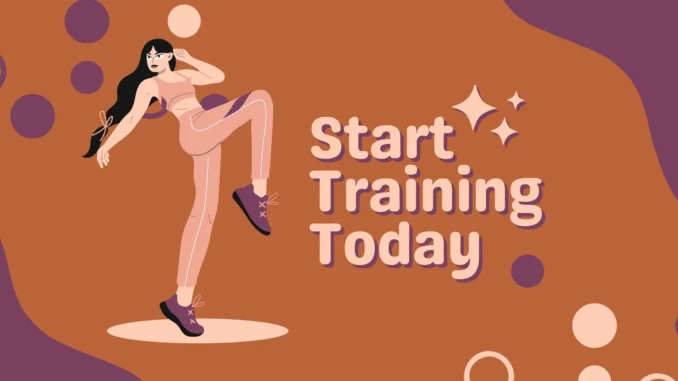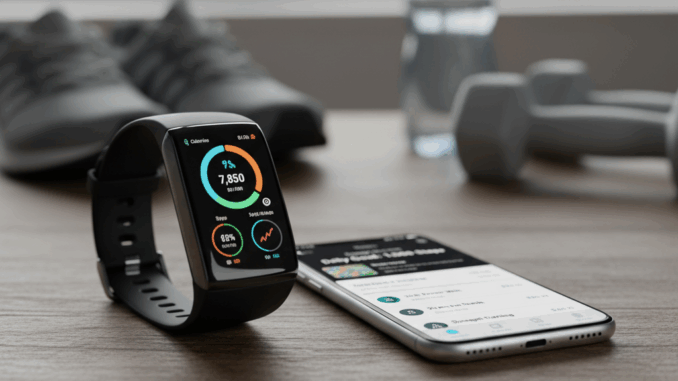
Start Fitness: Your Beginner’s Guide to a Healthier Lifestyle
The decision to embark on a fitness journey is one of the most empowering choices you can make for your overall well-being. However, for many, the world of fitness can seem daunting, filled with intimidating gym equipment, complex workout routines, and often, overwhelming information. If you’re standing at the starting line, wondering how to start fitness without feeling intimidated or getting lost, you’ve come to the right place. This ultimate beginner’s guide is designed to demystify fitness, break down the essentials, and provide you with a clear, actionable roadmap to building a healthier, more active lifestyle.
This post will cover everything you need to know to confidently start fitness, from setting realistic goals and understanding basic exercise types to fueling your body and staying motivated. Say goodbye to confusion and hello to a sustainable, enjoyable path to a healthier you.
The Beginner’s Mindset: Why Getting Started is the Hardest Part
Before we dive into the “how-to,” let’s acknowledge that starting something new, especially fitness, can be challenging. You might be facing:
- Intimidation: Fear of not knowing what to do, looking foolish, or injuring yourself.
- Overwhelm: Too much information, too many conflicting recommendations.
- Lack of Motivation: Struggling to find the drive or consistency.
- Past Failures: Discouragement from previous attempts that didn’t stick.
Understanding these common hurdles is the first step. This guide is built to address them, focusing on simplicity, safety, and sustainability. The most important thing to remember is that everyone starts somewhere. Your journey is unique, and the goal is simply to start fitness and build momentum.
Phase 1: Laying the Foundation – Before You Lift a Finger
Successful fitness isn’t just about moving your body; it’s about preparation and intention.
1. Consult Your Doctor
This is a non-negotiable first step, especially if you have any pre-existing health conditions, injuries, or haven’t been active for a long time. Your doctor can ensure you’re cleared for physical activity and offer personalized advice on what types of exercises might be best suited for you. Safety first!
2. Define Your “Why” and Set Realistic Goals
Why do you want to start fitness? Is it to feel more energetic, lose weight, build strength, improve your mood, or reduce health risks? Your “why” will be your most powerful motivator.
Realistic Goals (SMART Goals):
- Specific: “I plan to incorporate a 30-minute walk into my routine three days a week.”
- Measurable: “I will track my walks using a fitness app to log distance, duration, and frequency.”
- Achievable: “Since I have a flexible schedule, I can realistically fit three 30-minute walks into my week.”
- Relevant: “Walking will help me feel more energetic and improve my mood.”
- Time-Bound: “I will consistently meet this goal for the next two months to build a lasting habit.”
These points are a great start! However, the “Achievable” and “Measurable” points are a bit repetitive. Let’s make them more distinct and correct the phrasing to be more active and clear.
3. Choose Activities You Enjoy
This is perhaps the most crucial tip for beginners. If you dread your workouts, you won’t stick with them. Experiment with different types of activities to find what resonates with you.
- Consider: Walking, hiking, cycling, dancing, swimming, team sports, yoga, home workout videos, bodyweight exercises.
Phase 2: Taking the First Steps – Movement and Fuel
Now that you have your foundation, it’s time to move! Remember, consistency is far more important than intensity when you start fitness.
1. Integrate Movement into Your Day (Even Small Bites Count!)
Don’t feel pressured to spend an hour at the gym right away. Start small and build up.
- Walk More: Take the stairs instead of the elevator, park further away, walk during your lunch break. Aim for 30 minutes of moderate-intensity activity most days of the week, broken into smaller chunks if needed (e.g., three 10-minute walks).
- Stand More: If you have a sedentary job, set an alarm to stand up and move for 1-2 minutes every hour.
- Bodyweight Exercises: Start with simple exercises at home like squats (using a chair for balance), wall push-ups, lunges, planks (on your knees if needed), and glute bridges. Aim for 2-3 sets of 8-12 repetitions.
READ ALSO Why does weight training improve muscular strength more than cardiorespiratory fitness?
2. Understand Basic Exercise Types
To build a well-rounded fitness routine, you’ll want a mix of the following:
- Cardio (Aerobic Exercise): Activities that get your heart rate up and improve cardiovascular health (e.g., walking, jogging, cycling, swimming, dancing). Aim for 150 minutes of moderate intensity or 75 minutes of vigorous intensity per week.
- Strength Training: Exercises that build muscle and bone density (e.g., bodyweight exercises, lifting weights, resistance bands). Aim for 2-3 sessions per week, targeting all major muscle groups.
- Flexibility & Balance: Activities that improve range of motion and prevent injury (e.g., stretching, yoga, Pilates). Do these regularly, especially after your workouts.

3. Fuel Your Body with Balanced Nutrition
Exercise and nutrition go hand-in-hand. You can’t out-train a poor diet, and your body needs proper fuel to perform and recover.
- Prioritize Whole Foods: Focus on fruits, vegetables, lean proteins (chicken, fish, beans, tofu), whole grains (oats, brown rice), and healthy fats (avocado, nuts, olive oil).
- Hydrate, Hydrate, Hydrate: Drink plenty of water throughout the day. Your body needs it for every function, especially during and after exercise.
- Listen to Your Hunger Cues: Eat when you’re hungry, stop when you’re satisfied. Avoid restrictive diets; focus on sustainable, healthy eating patterns.
Phase 3: Sustaining Momentum – The Long Game
Consistency is the secret sauce to long-term fitness success. Once you start fitness, the next challenge is to keep going.
1. Track Your Progress
Seeing how far you’ve come is a powerful motivator.
- Journal: Keep a simple log of your workouts, how you felt, and any improvements.
- Fitness Apps/Wearables: Use technology to track steps, distance, calories, or heart rate.
- Non-Scale Victories: Celebrate things like more energy, better sleep, clothes fitting better, or being able to do more reps.

2. Prioritize Rest and Recovery
Exercise is a stressor, and your muscles grow and repair during rest.
- Sleep: Aim for 7-9 hours of quality sleep per night.
- Rest Days: Incorporate at least 1-2 full rest days per week, or active recovery days (light stretching, gentle walking).
- Listen to Your Body: Don’t push through sharp pain. Take a break if you feel overworked or are experiencing persistent soreness.
3. Find an Accountability Partner or Community
Having someone to share your journey with can make a huge difference.
- Workout Buddy: Partner with a friend who has similar goals.
- Fitness Classes: Join a local class (yoga, dance, spin) for structure and social interaction.
- Online Communities: Engage with online fitness groups for support and inspiration.
4. Stay Flexible and Adapt
Life happens. You’ll miss workouts, get sick, or lose motivation sometimes. The key is how you respond.
- Don’t Give Up: A missed workout isn’t a failure; it’s just one day. Get back to it tomorrow.
- Modify: If you can’t do a full workout, do a shorter one. If you can’t go to the gym, do bodyweight exercises at home.
- Re-evaluate: As you get stronger, you’ll need to adjust your routine (e.g., increase weights, duration, or intensity) to continue progressing. This is called progressive overload.
Conclusion: Your Journey Starts Now
Taking the leap to start fitness is an incredible gift you give yourself. It’s a journey of self-discovery, resilience, and profound positive change. Remember to start small, stay consistent, listen to your body, and celebrate every victory along the way. Don’t compare your beginning to someone else’s middle. This is your ultimate guide to building a healthier, more active, and more fulfilling lifestyle. The most important step is always the first one. What will you do today to start fitness?

Leave a Reply